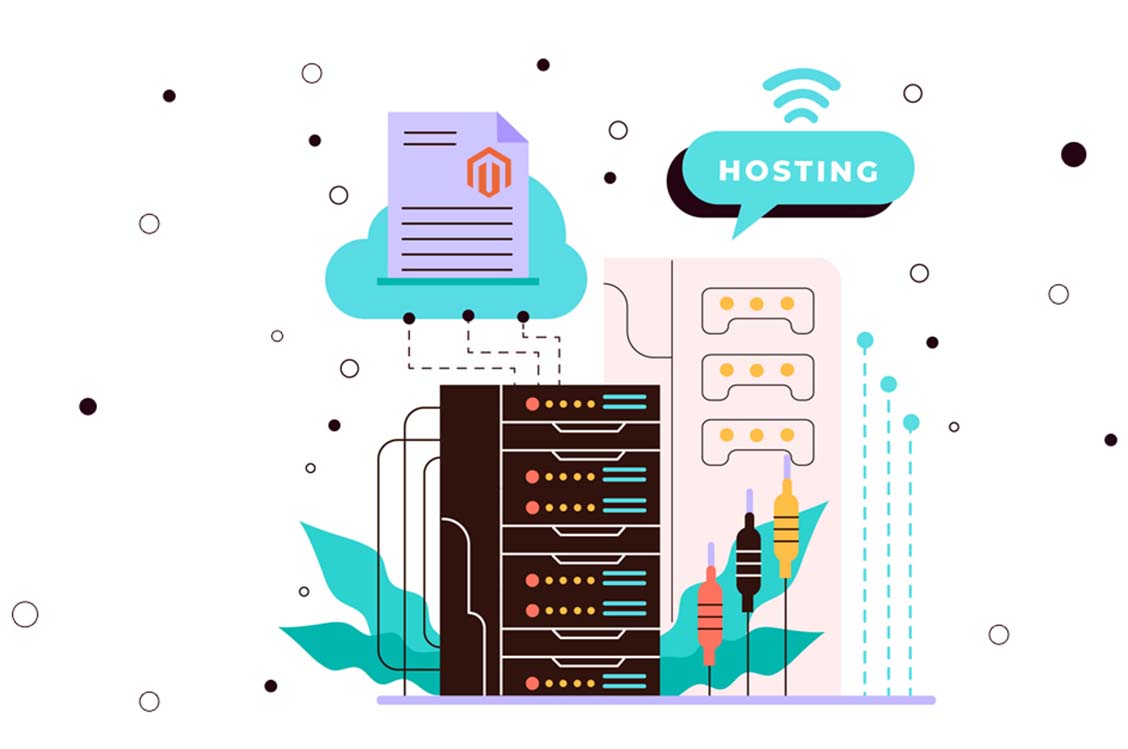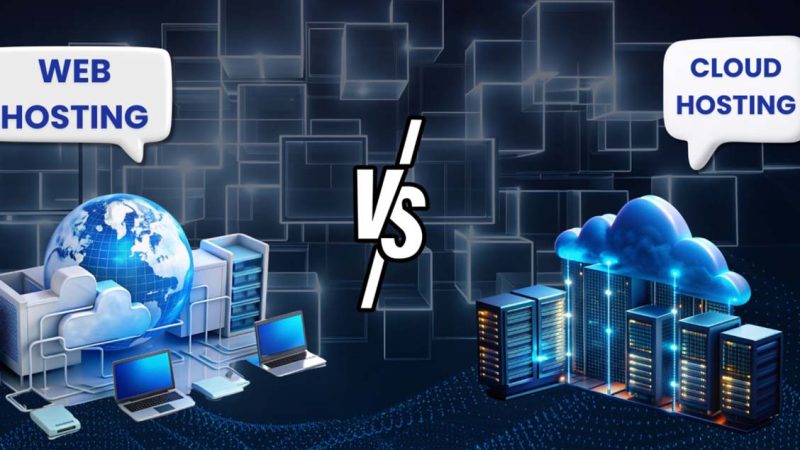The Development Trends and Business Opportunities of Hosting Services

The term “hosting,” in the eyes of most people, has merely meant renting a server or a cabinet in a data center, with its core value lying in providing stable power supply, high-speed network, and a constant temperature environment. However, amidst the sweeping waves of cloud computing, artificial intelligence, the Internet of Things, and edge computing, the connotation and extension of hosting services are undergoing earth-shaking changes. It has long evolved from simple resource leasing into the core engine of enterprise digital transformation, an indispensable strategic infrastructure supporting the future digital world. For entrepreneurs, investors, and IT practitioners, deeply understanding the development trends of hosting services is not just a technical knowledge update, but the key to capturing huge business opportunities in the next decade.
I. The Rise of Edge Computing – Value Reconstruction from “Center” to “Edge”
1.1 The Essence and Driving Forces of Edge Computing
The traditional cloud computing model involves transmitting all data to centralized, large-scale data centers for processing via networks. However, with the explosive growth of IoT devices and the proliferation of real-time applications (such as autonomous driving, Industry 4.0, and telemedicine), the limitations of this model have become increasingly apparent: network latency, bandwidth costs, and security risks. Edge computing has emerged accordingly, with its core idea being “to deploy computing and data storage at the network edge, closer to the data source,” performing data processing and decision-making locally, and transmitting only necessary results to the cloud.
Its core driving forces lie in:
- Low Latency Requirements: Autonomous vehicles need to react within milliseconds, and industrial robots require real-time coordination, all demanding that computing power must be immediately adjacent to the devices.
- Bandwidth Saving: A smart factory might generate terabytes of sensor data daily; uploading all of it to the cloud is costly and unnecessary.
- Data Sovereignty and Privacy: Localized processing of sensitive data (such as facial recognition, medical records) helps meet increasingly stringent data regulations.
- High Reliability: Even in the event of a network outage, edge nodes can ensure the continuous operation of local business.
1.2 The Evolving Role and Business Opportunities for Hosting Services in the Edge Era
Under this trend, the role of Managed Service Providers (MSPs) is shifting from “data center landlords” to “builders and operators of edge infrastructure.”
- Deployment and Operation of Micro Data Centers and Edge Nodes. Large hosting providers are deploying smaller, more widely distributed micro data centers in cities, factory campuses, and even next to cellular network base stations around the world. This brings cooperation opportunities for local system integrators, property owners (such as commercial buildings with vacant space), and telecommunications operators. For example, hosting providers can collaborate with 5G operators to co-locate edge computing nodes with 5G base stations, providing ultra-low latency services for applications like AR/VR and cloud gaming.
- Edge-Cloud Collaborative Management Services. Enterprises face the complexity of managing hybrid, distributed infrastructure. Hosting service providers can launch unified management platforms to help enterprises seamlessly schedule and manage computing, storage, and network resources from the core cloud to edge nodes. This creates substantial demand for new types of operational software, automated orchestration tools, and professional consulting services.
- Vertical Industry-Specific Edge Solutions. Above the generic edge infrastructure lies a huge market for industry applications. Hosting providers can collaborate with software developers to provide integrated edge solutions of “hardware + software + hosting” for specific industries (such as retail, manufacturing, healthcare). For instance, providing smart video analytics services based on edge computing for chain retail stores, analyzing customer traffic and consumption behavior in real-time while protecting customer privacy.
II. Sustainability and the Inevitable Choice of Green Data Centers
2.1 Industry Pressure Under “Carbon Neutrality” Goals

Data centers are notoriously known as “energy consumption beasts.” Under the global pursuit of “carbon neutrality,” the data center industry faces tremendous pressure from government regulations, investor demands, and public opinion. Power Usage Effectiveness (PUE) is no longer the sole metric; the proportion of renewable energy used, water consumption, carbon footprint, etc., have become new key indicators.
2.2 Green Technology Applications and Emerging Market Opportunities
Sustainability is no longer a cost burden but a core competitiveness and a growth point for new business for hosting service providers.
- Direct Procurement and Trading of Renewable Energy. Leading hosting providers are directly investing in wind and solar power stations through signing large-scale Power Purchase Agreements (PPAs), and even building their own renewable energy facilities. This not only stabilizes long-term energy costs but also becomes an endorsement of “green electricity” provided to customers. This creates new markets for new energy project developers, energy trading platforms, and carbon credit consulting agencies.
- Innovation and Application of Advanced Cooling Technologies. Traditional air cooling technology is approaching its limits. Liquid cooling (including immersion cooling and cold plate technology) is becoming the mainstream solution for high-density computing. This brings huge market opportunities for startups focusing on liquid cooling technology, server refitting services, and specialized coolant producers. Meanwhile, data center designs utilizing natural cooling sources (such as seawater, lake water, and natural air) are also regaining favor.
- “Green Premium” and ESG Reporting Services. More and more enterprise customers consider a provider’s ESG (Environmental, Social, and Governance) performance as an important factor when choosing hosting services. Data centers capable of providing “zero-carbon” or “green” hosting services can command a “green premium.” Furthermore, hosting service providers can offer customers detailed reporting services on their IT carbon footprint, helping customers achieve their own ESG goals. This in itself is a high-value-added service.
III. Deep Integration of Hybrid Multi-Cloud and Hosting Services
3.1 Hybrid Multi-Cloud Becomes the New Normal for Enterprise IT
Almost no large enterprise will stake its future on a single cloud provider. To avoid vendor lock-in, optimize costs, meet compliance requirements, and deploy applications flexibly, enterprises commonly adopt a hybrid multi-cloud architecture that combines public cloud, private cloud, and traditional IT. However, managing such a complex environment is a significant challenge.
3.2 Hosting Service Providers as “Cloud-Neutral Architects”
In this trend, hosting service providers have found their unique positioning: to become the “hub” that connects and manages everything.
- Colocation as the “Anchor Point” of Hybrid Cloud. Enterprises can deploy their private cloud or core databases in colocation data centers and directly connect to multiple public clouds through high-speed, low-latency dedicated links (such as AWS Direct Connect, Azure ExpressRoute, Google Cloud Interconnect). Colocation data centers thus become the physical core of the hybrid cloud architecture. This significantly enhances the value of the colocation business.
- Construction of Hosted Cloud and Interconnection Ecosystems. Large hosting service providers are building “interconnection hubs” within their data centers, gathering dozens or even hundreds of cloud service providers, network operators, SaaS providers, and security service providers. Enterprises can access required services with a single click in this “digital marketplace.” Operating and maintaining such a prosperous interconnection ecosystem is itself a high-profit, high-stickiness business model.
- The Golden Age of Cross-Cloud Managed Services (MSP). Enterprises urgently need tools and services that can uniformly manage their resources on AWS, Azure, Google Cloud, and on-premises private clouds. Hosting service providers can leverage their infrastructure advantages and neutral stance to provide professional managed services such as cloud migration, cost optimization, security compliance, and unified monitoring. The demand for IT talents with multi-cloud certifications and skills will be unprecedented.
IV. The Core Value of Security and Compliance as a Service
4.1 Increasingly Complex Threat Environment and Regulatory Landscape
Cyber attacks are becoming increasingly frequent and complex, while global data privacy regulations (such as GDPR, CCPA) are continuously being introduced and updated. For many enterprises, especially small and medium-sized ones, building and maintaining a security team and infrastructure capable of meeting these challenges is costly and beyond their capabilities.
4.2 From Infrastructure Security to Full-Stack Security Hosting
Security is no longer an “add-on” for hosting services, but its “core value proposition.”
- Distributed Denial of Service (DDoS) Mitigation and Web Application Firewall (WAF). Hosting service providers can offer “scrubbing” services at the network entry point, automatically detecting and filtering malicious traffic to protect customer businesses from DDoS attacks. Simultaneously, providing managed WAF services protects web applications from threats like the OWASP Top Ten security risks.
- Managed Implementation of Zero Trust Architecture. Zero Trust (“Never Trust, Always Verify”) is becoming the new generation cybersecurity framework. Hosting service providers can leverage their network advantages to offer managed Zero Trust Network Access (ZTNA) services, replacing traditional VPNs and providing more secure and flexible access control for enterprise employees and applications.
- Automation and Certification of Compliance Frameworks. Meeting specific industry compliance requirements like PCI DSS (Payment Card Industry Data Security Standard) and HIPAA (Health Insurance Portability and Accountability Act) is extremely complex. Hosting service providers can invest in building data center environments certified to relevant standards and offer “Compliance as a Service” to enterprises, significantly reducing customers’ compliance costs and risks through automated tools and professional audit support.
V. Artificial Intelligence Reshaping Data Center Operations

5.1 AI as an Optimization Tool
Artificial intelligence and machine learning are being used to optimize the operations of data centers themselves.
- AI-Driven Energy Efficiency Management: By analyzing massive amounts of temperature, humidity, and power consumption data, AI models can dynamically adjust cooling systems, achieving significantly lower PUE than traditional methods.
- Predictive Maintenance: AI can analyze sensor data from server hardware, power supplies, and cooling units to predict equipment failures, enabling a shift from a “reactive response” to a “proactive prevention” operational model, greatly enhancing availability.
5.2 AI as a Service and Infrastructure Demands
More importantly, hosting services need to directly support the AI workloads run by customers.
- High-Performance Computing (HPC) and AI-Ready Infrastructure. Training AI models requires powerful computing capacity, typically large clusters of GPUs. Hosting service providers can invest in building computer rooms specifically optimized for HPC and AI workloads, providing infrastructure with high power density, advanced cooling, and high-speed RDMA networks, leased to enterprises and research institutions requiring large-scale AI training.
- Managed MLOps Platforms. Enterprises need not only computing power but also a complete toolchain to manage the development, deployment, monitoring, and iterative lifecycle of AI models (i.e., MLOps). Hosting service providers can collaborate with software vendors or develop their own to provide managed MLOps platforms, lowering the technical barrier for enterprises to apply AI.
The hosting service industry is at an exciting historical crossroads. The future winners will no longer be those providers with merely the most data center space, but those who can most effectively integrate computing power, connectivity, and intelligence – the “Intelligent Connectors.”
For entrepreneurs and investors, opportunities lie in emerging companies providing key technologies and services for these trends, such as edge computing software platforms, liquid cooling solution providers, multi-cloud management tool developers, and AI-driven operational security startups.
For enterprise IT decision-makers, the criteria for choosing a hosting service partner need to change fundamentally. The focus should shift from primarily looking at price and rack units (U) to evaluating its edge coverage capability, green energy strategy, richness of the cloud interconnection ecosystem, maturity of security and compliance services, and support capability for AI workloads.
The future of hosting services is a deeply integrated, ubiquitous, sustainable, and highly autonomous computing network that blends physical infrastructure with digital intelligence. It is not only the “foundation” of the Internet but also the “central nervous system” of the future intelligent world. Understanding this trend and laying the groundwork in advance will undoubtedly secure a favorable position in the future waves of the digital economy.


